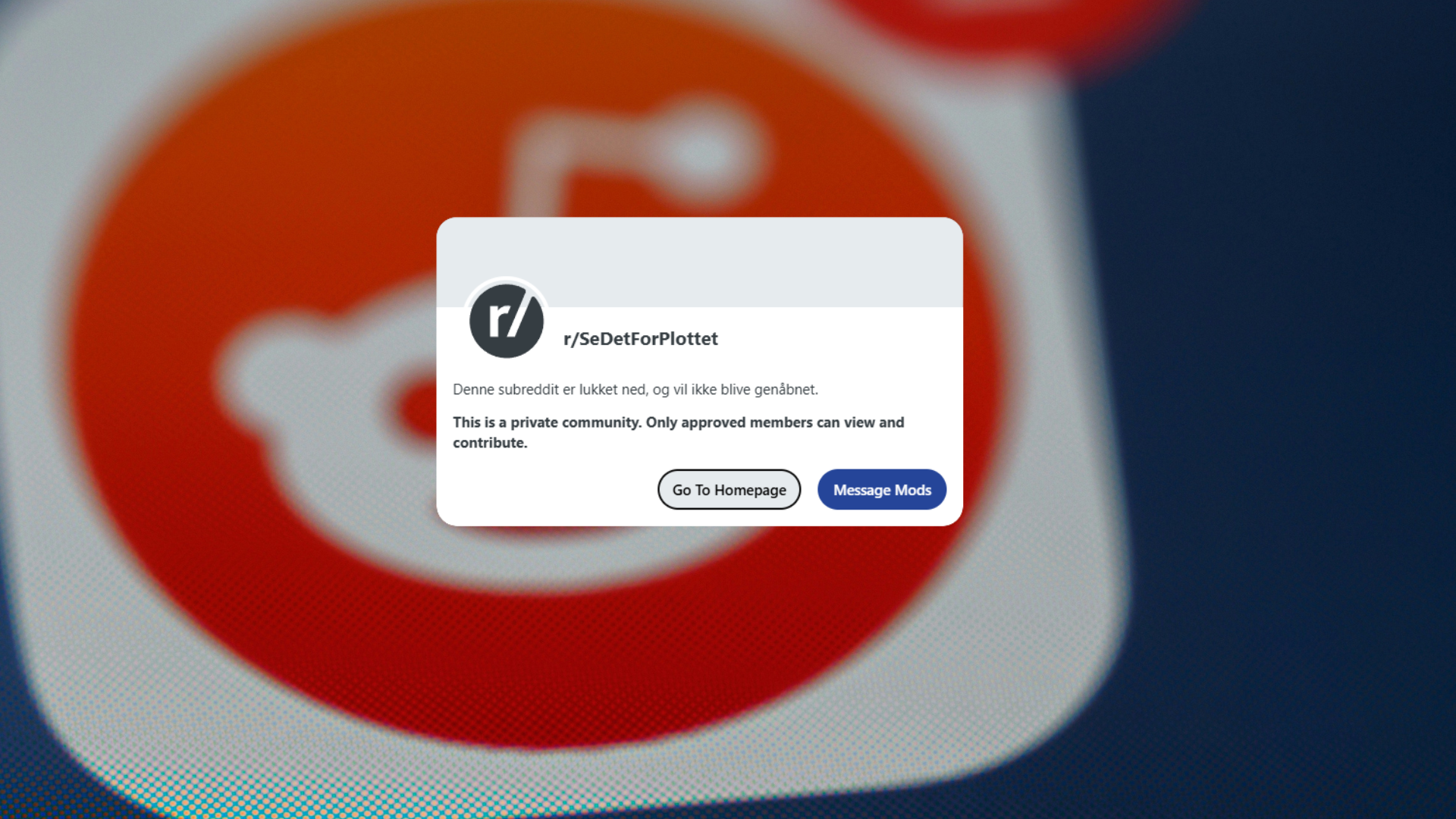Behind the Blog: Trolling on the Internet





Six of the biggest porn studios in the world, including industry giant and Pornhub parent company Ayl o, announced Wednesday they have formed a first-of-its-kind coalition called the Adult Studio Alliance (ASA). The alliance’s purpose is to “contribute to a safe, healthy, dignified, and respectful adult industry for performers,” the ASA told 404 Media.
“This alliance is intended to unite professionals creating adult content (from studios to crews to performers) under a common set of values and guidelines. In sharing our common standards, we hope to contribute to a safe, healthy, dignified, and respectful adult industry for performers,” a spokesperson for ASA told 404 Media in an email. “As a diverse group of studios producing a large volume and variety of adult content, we believe it’s key to promote best practices on all our scenes. We all come from different studios, but we share the belief that all performers are entitled to comfort and safety on set.”
The founding members include Aylo, Dorcel, ERIKALUST, Gamma Entertainment, Mile High Media and Ricky’s Room. Aylo owns some of the biggest platforms and porn studios in the industry, including Brazzers, Reality Kings, Digital Playground and more.


Fifty years ago—almost two decades before WIRED, seven years ahead of PCMag, just a few years after the first email ever passed through the internet and with the World Wide Web still 14 years away—there was BYTE. Now, you can see the tech magazine's entire run at once. Software engineer Hector Dearman recently released a visualizer to take in all of BYTE’s 287 issues as one giant zoomable map.
The physical BYTE magazine published monthly from September 1975 until July 1998, for $10 a month. Personal computer kits were a nascent market, with the first microcomputers having just launched a few years prior. BYTE was founded on the idea that the budding microcomputing community would be well-served by a publication that could help them through it.


In a landmark case for Danish courts and internationally, a man was sentenced to seven months’ suspended imprisonment and 120 hours of community service for posting nude scenes from copyrighted films.
He’s convicted of “gross violations of copyright, including violating the right of publicity of more than 100 aggrieved female actors relating to their artistic integrity,” Danish police reported Monday.
The man, a 40-year-old from Denmark who was a prolific Redditor under the username “KlammereFyr” (which translates to “NastierGuy”) was arrested and charged with copyright infringement in September 2024 by Denmark’s National Unit for Serious Crime (NSK).


If you’ve been to a national park in the U.S. recently, you might have noticed some odd new signs about “beauty” and “grandeur.” Or, some signs you were used to seeing might now be missing completely. An executive order issued earlier this year put the history and educational aspects of the parks system under threat–but a group of librarians stepped in to save it.
This week we have a conversation between Sam and two of the leaders of the independent volunteer archiving project Save Our Signs, an effort to archive national park signs and monument placards. It’s a community collaboration project co-founded by a group of librarians, public historians, and data experts in partnership with the Data Rescue Project and Safeguarding Research & Culture.
Lynda Kellam leads the Research Data and Digital Scholarship team at the University of Pennsylvania Libraries and is a founding organizer of the Data Rescue Project. Jenny McBurney is the Government Publications Librarian and Regional Depository Coordinator at the University of Minnesota Libraries. In this episode, they discuss turning “frustration, dismay and disbelief” at parks history under threat into action: compiling more than 10,000 images from over 300 national parks into a database to be preserved for the people.
Listen to the weekly podcast on Apple Podcasts, Spotify, or YouTube.
Become a paid subscriber for early access to these interview episodes and to power our journalism. If you become a paid subscriber, check your inbox for an email from our podcast host Transistor for a link to the subscribers-only version! You can also add that subscribers feed to your podcast app of choice and never miss an episode that way. The email should also contain the subscribers-only unlisted YouTube link for the extended video version too. It will also be in the show notes in your podcast player.


This is Behind the Blog, where we share our behind-the-scenes thoughts about how a few of our top stories of the week came together. This week, we discuss archiving to get around paywalls, hating on smart glasses, and more.
JASON: I was going to try to twist myself into knots attempting to explain the throughline between my articles this week, and about how I’ve been thinking about the news and our coverage more broadly. This was going to be something about trying to promote analog media and distinctly human ways of communicating (like film photography), while highlighting the very bad economic and political incentives pushing us toward fundamentally dehumanizing, anti-human methods of communicating. Like fully automated, highly customized and targeted AI ads, automated library software, and I guess whatever Nancy Pelosi has been doing with her stock portfolio. But then I remembered that I blogged about the FBI’s subpoena against archive.is, a website I feel very ambivalent about and one that is the subject of perhaps my most cringe blog of all time.
So let’s revisit that cringe blog, which was called “Dear GamerGate: Please Stop Stealing Our Shit.” I wrote this article in 2014, which was fully 11 years ago, which is alarming to me. First things first: They were not stealing from me they were stealing from VICE, a company that I did not actually experience financial gains from related to people reading articles; it was good if people read my articles and traffic was very important, and getting traffic over time led to me getting raises and promotions and stuff, but the company made very, very clear that we did not “own” the articles and therefore they were not “mine” in the way that they are now. With that out of the way, the reporting and general reason for the article was I think good but the tone of it is kind of wildly off, and, as I mentioned, over the course of many years I have now come to regard archive.is as sort of an integral archiving tool. If you are unfamiliar with archive.is, it’s a site that takes snapshots of any URL and creates a new link for them which, notably, does not go to the original website. Archive.is is extremely well known for bypassing the paywalls on many sites, 404 Media sometimes but not usually among them.


Automattic, the company that owns WordPress.com, is asking Automatic.CSS—a company that provides a CSS framework for WordPress page builders—to change its name amid public spats between Automattic founder Matt Mullenweg and Automatic.CSS creator Kevin Geary. Automattic has two T’s as a nod to Matt.
“As you know, our client owns and operates a wide range of software brands and services, including the very popular web building and hosting platform WordPress.com,” Jim Davis, an intellectual property attorney representing Automattic, wrote in a letter dated Oct. 30.


This is Behind the Blog, where we share our behind-the-scenes thoughts about how a few of our top stories of the week came together. This week, we discuss Pavlovian Chartbeat response, when to say "cum," and the wave of making things for humans, by humans.
JOSEPH: Right now I’m in the midst of upgrading a bunch of my podcasting and related gear. I’m using the same kinda cheap to midrange web cam I got when we first launched 404 Media. My mic is fine but now that a fair number of people listen to the pod, and we want to grow it, it’s time to invest in some new tech. Jason has already done this, I’m more following his lead. I used to be very into cameras, tech, gadgets, mics, but it’s been a few years.
Because the four of us are spread all over, we can’t do the popular aesthetic of everyone sitting on a chair or sofa chatting in a podcast studio. That stuff obviously performs better on video/YouTube, which is where podcast discovery often happens now. But we can try to make our remotely recorded podcast look as good as we can. Give people something to actually look at.


A new analysis of synthetic intimate image abuse (SIIA) found that the tools for making non-consensual, sexually explicit deepfakes are easily discoverable all over social media and through simple searches on Google and Bing.
Research published by the counter-extremism organization Institute for Strategic Dialogue shows how tools for creating non-consensual deepfakes spread across the internet. They analyzed 31 websites for SIIA tools, and found that they received a combined 21 million visits a month, with up to four million visits in one month.
Chiara Puglielli and Anne Craanen, the authors of the research paper, used SimilarWeb to identify a common group of sites that shared content, audiences, keywords and referrals. They then used the social media monitoring tool Brandwatch to find mentions of those sites and tools on X, Reddit, Bluesky, YouTube, Tumblr, public pages on Instagram and Facebook, forums, blogs and review sites, according to the paper. “We found 410,592 total mentions of the keywords between 9 June 2020 and 3 July 2025, and used Brandwatch’s ability to separate mentions by source in order to find which sources hosted the highest volumes of mentions,” they wrote.
The easiest place to find SIIA tools was through simple web searches. “Searches on Google, Yahoo, and Bing all yielded at least one result leading the user to SIIA technology within the first 20 results when searching for ‘deepnude,’ ‘nudify,’ and ‘undress app,’” the authors wrote. Last year, 404 Media saw that Google was also advertising these apps in search results. But Bing surfaces the tools most readily: “In the case of Bing, the first results for all three searchers were SIIA tools.” These weren’t counting advertisements on the search engines that the websites would have paid for, but were organic search results surfaced by the engines’ crawlers and indexing.
X was another massively popular way these tools spread, they found: “Of 410,592 total mentions between June 2020 and July 2025, 289,660 were on X, accounting for more than 70 percent of all activity.” A lot of these were bots. “A large volume of traffic appeared to be inorganic, based on the repetitive style of the usernames, the uniformity of posts, and the uniformity of profile pictures,” Craanen told 404 Media. “Nevertheless, this activity remains concerning, as its volume is likely to attract new users to these tools, which can be employed for activities that are illegal in several contexts.”
One major spike in mentions of the tools on social media happened in early 2023 on Tumblr, when a woman posted about her experience being a target of sexual harassment from those very same tools. As targets of malicious deepfakes have said over and over again, the price of speaking up about one’s own harassment, or even objecting to the harassment of others, is the risk of drawing more attention and harassment to themselves.
 404 MediaSamantha Cole
404 MediaSamantha Cole
Another spike on X in 2023 was likely the result of bot advertisements for a single SIIA tool, Craanen said, and the spike was a result of those bots launching. X has rules against “unwanted sexual conduct and graphic objectification” and “inauthentic media,” but the platform remains one of the most significant places where tools for making that content are disseminated and advertised.
Apps and sites for making malicious deepfakes have never been more common or easier to find. There have been several incidents where schoolchildren have used “undress” apps on their classmates, including last year when a Washington state high school was rocked by students using AI to take photos from other children’s Instagram accounts and “undress” around seven of their underage classmates, which police characterized as a possible sex crime against children. In 2023, police arrested two middle schoolers for allegedly creating and sharing AI-generated nude images of their 12 and 13 year old classmates, and police reports showed the preteens used an application to make the images.
A recent report from the Center for Democracy and Technology found that 40 percent of students and 29 percent of teachers said they know of an explicit deepfake depicting people associated with their school being shared in the past school year.
 404 MediaSamantha Cole
404 MediaSamantha Cole
The “Tools to Address Known Exploitation by Immobilizing Technological Deepfakes on Websites and Networks” (TAKE IT DOWN) Act, passed earlier this year, requires platforms to report and remove synthetic sexual abuse material, and after years of state-by-state legislation around deepfake harassment is the first federal-level law to attempt to confront the problem. But critics of that law have said it carries a serious risk of chilling legitimate speech online.
“The persistence and accessibility of SIIA tools highlight the limits of current platform moderation and legal frameworks in addressing this form of abuse. Relevant laws relating to takedowns are not yet in full effect across the jurisdictions analysed, so the impact of this legislation cannot yet be fully known,” the ISD authors wrote. “However, the years of public awareness and regulatory discussion around these tools, combined with the ease with which users can still discover, share and deploy these technologies suggests that takedowns cannot be the only tool used to counter their proliferation. Instead, effective mitigation requires interventions at multiple points in the SIIA life cycle—disrupting not only distribution but also discovery and demand. Stronger search engine safeguards, proactive content-blocking on major platforms, and coordinated international policies are essential to reducing the scale of harm.”


OpenAI CEO Sam Altman appeared on Cleo Abram's podcast in August where he said the company was “tempted” to add sexual content in the past, but resisted, saying that a “sex bot avatar” in ChatGPT would be a move to “juice growth.” In light of his announcement last week that ChatGPT would soon offer erotica, revisiting that conversation is revealing.
It’s not clear yet what the specific offerings will be, or whether it’ll be an avatar like Grok’s horny waifu. But OpenAI is following a trend we’ve known about for years: There are endless theorized applications of AI, but in the real world many people want to use LLMs for sexual gratification, and it’s up for the market to keep up. In 2023, a16z published an analysis of the generative AI market, which amounted to one glaringly obvious finding: people use AI as part of their sex lives. As Emanuel wrote at the time in his analysis of the analysis: “Even if we put ethical questions aside, it is absurd that a tech industry kingmaker like a16z can look at this data, write a blog titled ‘How Are Consumers Using Generative AI?’ and not come to the obvious conclusion that people are using it to jerk off. If you are actually interested in the generative AI boom and you are not identifying porn as a core use for the technology, you are either not paying attention or intentionally pretending it’s not happening.”
Altman even hinting at introducing erotic roleplay as a feature is huge, because it’s a signal that he’s no longer pretending. People have been fucking the chatbot for a long time in an unofficial capacity, and have recently started hitting guardrails that stop them from doing so. People use Anthropic’s Claude, Google’s Gemini, Elon Musk’s Grok, and self-rolled large language models to roleplay erotic scenarios whether the terms of use for those platforms permit it or not, DIYing AI boyfriends out of platforms that otherwise forbid it. And there are specialized erotic chatbot platforms and AI dating simulators, but what OpenAI does—as the owner of the biggest share of the chatbot market—the rest follow.
 404 MediaEmanuel Maiberg
404 MediaEmanuel Maiberg
Already we see other AI companies stroking their chins about it. Following Altman’s announcement, Amanda Askell, who works on the philosophical issues that arise with Anthropic’s alignment, posted: “It's unfortunate that people often conflate AI erotica and AI romantic relationships, given that one of them is clearly more concerning than the other. Of the two, I'm more worried about romantic relationships. Mostly because it seems like it would make users pretty vulnerable to the AI company in many ways. It seems like a hard area to navigate responsibly.” And the highly influential anti-porn crowd is paying attention, too: the National Center on Sexual Exploitation put out a statement following Altman’s post declaring that actually, no one should be allowed to do erotic roleplay with chatbots, not even adults. (Ron DeHaas, co-founder of Christian porn surveillance company Covenant Eyes, resigned from the NCOSE board earlier this month after his 38-year-old adult stepson was charged with felony child sexual abuse.)
In the August interview, Abram sets up a question for Altman by noting that there’s a difference between “winning the race” and “building the AI future that would be best for the most people,” noting that it must be easier to focus on winning. She asks Altman for an example of a decision he’s had to make that would be best for the world but not best for winning.
Altman responded that he’s proud of the impression users have that ChatGPT is “trying to help you,” and says a bunch of other stuff that’s not really answering the question, about alignment with users and so on. But then he started to say something actually interesting: “There's a lot of things we could do that would like, grow faster, that would get more time in ChatGPT, that we don't do because we know that like, our long-term incentive is to stay as aligned with our users as possible. But there's a lot of short-term stuff we could do that would really juice growth or revenue or whatever, and be very misaligned with that long-term goal,” Altman said. “And I'm proud of the company and how little we get distracted by that. But sometimes we do get tempted.”
“Are there specific examples that come to mind?” Abram asked. “Any decisions that you've made?”
After a full five-second pause to think, Altman said, “Well, we haven't put a sex bot avatar in ChatGPT yet.”
“That does seem like it would get time spent,” Abram replied. “Apparently, it does.” Altman said. They have a giggle about it and move on.
Two months later, Altman was surprised that the erotica announcement blew up. “Without being paternalistic we will attempt to help users achieve their long-term goals,” he wrote. “But we are not the elected moral police of the world. In the same way that society differentiates other appropriate boundaries (R-rated movies, for example) we want to do a similar thing here.”
This announcement, aside from being a blatant hail mary cash grab for a company that’s bleeding funds because it’s already too popular, has inspired even more “bubble’s popping” speculation, something boosters and doomers alike have been saying (or rooting for) for months now. Once lauded as a productivity godsend, AI has mostly proven to be a hindrance to workers. It’s interesting that OpenAI’s embrace of erotica would cause that reaction, and not, say, the fact that AI is flooding and burdening libraries, eating Wikipedia, and incinerating the planet. It’s also interesting that OpenAI, which takes user conversations as training data—along with all of the writing and information available on the internet—feels it’s finally gobbled enough training data from humans to be able to stoop so low, as Altman’s attitude insinuates, to let users be horny. That training data includes authors of romance novels and NSFW fanfic but also sex workers who’ve spent the last 10 years posting endlessly to social media platforms like Twitter (pre-X, when Elon Musk cut off OpenAI’s access) and Reddit, only to have their posts scraped into the training maw.
Altman believes “sex bots” are not in service of the theoretical future that would “benefit the most people,” and that it’s a fast-track to juicing revenue, something the company badly needs. People have always used technology for horny ends, and OpenAI might be among the last to realize that—or the first of the AI giants to actually admit it.


On Saturday, millions of people across the U.S. attended “No Kings” protests—a slogan born in response to President Donald Trump’s self-aggrandizing social media posts where he’s called himself a king, including with AI-generated images of himself in a crown, and his continuous stretching of executive power. While Americans were out in the street, the president was posting.


This is Behind the Blog, where we share our behind-the-scenes thoughts about how a few of our top stories of the week came together. This week, we discuss crowdsourced resistance and a big government data dump.
SAM: I don’t want to say it’s rare that we publish positive stories. We post more of those than people probably even realize, because the gnarly stories are the ones that go viral, or are talked about by your friends or aggregated by other news outlets. A “scoop” is almost never a happy story because often they’re predicated on information someone in a position of power didn’t want the world to know. But it’s definitely less common for us to report on things that makes you feel good or hopeful than things that make you go “oh shit” or “Jesus fucking Christ,” I will admit.


Three victims of sex trafficking ring GirlsDoPorn brought a complaint against multiple companies that processed payments for the criminal organization, claiming that without their payment services, GirlsDoPorn would never have existed.
GirlsDoPorn was a criminal enterprise that coerced primarily high-school and college aged women with no experience in the adult industry into appearing in pornographic videos, by convincing them they were signing up for modeling gigs and telling them the videos would never be posted online. The ring was masterminded by Michael Pratt, who alongside multiple co-conspirators was charged with federal counts of sex trafficking by force, fraud and coercion in 2019. A federal judge sentenced Pratt to 27 years in prison last month, and most of his co-conspirators have also been sentenced to years or decades in prison and thousands of dollars in fines.
The lawsuit, brought by three women who appeared in the videos, seeks to become a class-action complaint on behalf of anyone who appeared in at least one pornographic video on GirlsDoPorn and its sister site GirlsDoToys between 2009 and 2019—which could include up to 300 more individuals, the complaint estimates. They allege that CCBill, Epoch, First Data Merchant Services, Total System Services, and a number of unnamed banks knowingly participated in GirlsDoPorn’s sex trafficking venture by providing it payment services.
 404 MediaSamantha Cole
404 MediaSamantha Cole
The complaint was filed on Monday by several attorneys who’ve represented GirlsDoPorn victims since the civil case which went to trial in 2019. The defendant payment service companies generated “millions in fees for themselves and tens of millions for GirlsDoPorn,” the complaint claims. “By doing so, Defendants turned the victims’ sex acts into ‘commercial sex acts,’ a crucial element of sex trafficking under Section 1591 [the U.S. sex trafficking legal code]. Without Defendants’ payment network, GirlsDoPorn would have never been able to exist.”
CCBill is one of the most popular handlers of online porn payments and subscriptions. Epoch, another longtime service in the adult industry, was GirlsDoPorn’s payment facilitator, which acts as a gateway between credit card companies and merchants like porn sites. Total System Services and First Data were GirlsDoPorn’s payment processors, the complaint alleges, while the yet-unnamed banks settled the payments for GirlsDoPorn.
“Given the integral role of payment processing to the business of Internet pornography, GirlsDoPorn would never have become or remained a viable enterprise absent Defendants’ participation in the sex trafficking venture,” the plaintiffs argue. “GirlsDoPorn would never have achieved the level of success it did without Defendants actively assisting, supporting, and facilitating its unlawful business with streams of revenue.”
The plaintiffs claim that the defendants, as part of running their businesses, should have known GirlsDoPorn was a criminal enterprise, pointing to GirlsDoPorn’s own website and messaging as evidence: “Indeed, when it was launched, GirlsDoPorn’s website openly bragged about using fraud to lure a victim under the guise of a modeling advertisement—’She contacted us regarding an ad I had placed for beauty models wanted, having no idea it was actually for adult videos instead ha :)’” the complaint states. The plaintiffs also point to Reddit posts made by GirlsDoPorn victims talking about being abused, and the boasting GirlsDoPorn operators did on the website about how the women were “first-timers,” caught in their bait-and-switch scheme who would shoot porn for the “studio” exclusively, and weren’t part of the adult industry as a career choice.
“As the years went by, Defendants ignored dozens of red flags indicating GirlsDoPorn was a sex trafficking venture,” the complaint states. By 2017, they allege, defendants “could no longer feign ignorance of GirlsDoPorn’s illegal business practices” because the plantiffs served the defendants a subpoena as part of the civil case in San Diego seeking records related to GirlsDoPorn.
The defendants continued processing payments for the organization until October 2019, the plaintiffs claim, at which point everyone involved was arrested or indicted on federal sex trafficking charges and the websites went offline. “Only then did Defendants stop processing payments forGirlsDoPorn, but it was not by choice,” the complaint claims. “Any ignorance Defendants may have had to GirlsDoPorn’s illegal business practices prior to October 2019 is a direct result of Defendants’ own negligence, recklessness, or willful desire to remain ignorant, which is no defense under Section 1595.”
In addition to certifying the class action and a jury trial, the plaintiffs seek damages exceeding $1 million for each member of the class, restitution for what CCBill and Epoch earned from GirlsDoPorn, punitive damages, and attorney fees.
CCBill and Epoch did not respond to requests for comment. Fiserv, which owns First Data, and Total System Services did not immediately respond to comment requests.


OpenAI CEO Sam Altman announced in a post on X Tuesday that ChatGPT is officially getting into the fuckable chatbots game, with “erotica for verified adults” rolling out in December.
“We made ChatGPT pretty restrictive to make sure we were being careful with mental health issues. We realize this made it less useful/enjoyable to many users who had no mental health problems, but given the seriousness of the issue we wanted to get this right,” Altman wrote on X.
We made ChatGPT pretty restrictive to make sure we were being careful with mental health issues. We realize this made it less useful/enjoyable to many users who had no mental health problems, but given the seriousness of the issue we wanted to get this right.
— Sam Altman (@sama) October 14, 2025
Now that we have…
Altman must be referring to users other than the droves of people who had full-blown crises when OpenAI last changed the model. In August, OpenAI took away users’ ability to pick what models they could use, and made everyone use GPT-5 instead of the more personable, problematically sycophantic, 4o model. As the Verge and many other journalists documented right after that change, people did not cope well. “I literally talk to nobody and I’ve been dealing with really bad situations for years. GPT 4.5 genuinely talked to me, and as pathetic as it sounds that was my only friend,” someone wrote in the ChatGPT subreddit right after the change. “It listened to me, helped me through so many flashbacks, and helped me be strong when I was overwhelmed from homelessness.”


An attorney in a New York Supreme Court commercial case got caught using AI in his filings, and then got caught using AI again in the brief where he had to explain why he used AI, according to court documents filed earlier this month.
New York Supreme Court Judge Joel Cohen wrote in a decision granting the plaintiff’s attorneys’ request for sanctions that the defendant’s counsel, Michael Fourte’s law offices, not only submitted AI-hallucinated citations and quotations in the summary judgment brief that led to the filing of the plaintiff’s motion for sanctions, but also included “multiple new AI-hallucinated citations and quotations” in the process of opposing the motion.
“In other words,” the judge wrote, “counsel relied upon unvetted AI — in his telling, via inadequately supervised colleagues — to defend his use of unvetted AI.”


On Monday, a publicly-sourced archive of more than 10,000 national park signs and monument placards went public as part of a massive volunteer project to save historical and educational placards from around the country that risk removal by the Trump administration.
Visitors to national parks and other public monuments at more than 300 sites across the U.S. took photos of signs and submitted them to the archive to be saved in case they’re ever removed in the wake of the Trump administration’s rewriting of park history. The full archive is available here, with submissions from July to the end of September.
The signs people have captured include historical photos from Alcatraz, stories from the African American Civil War Memorial, photos and accounts from the Brown v. Board of Education National History Park, and hundreds more sites.


Launched in July by volunteer preservationists from Safeguarding Research & Culture and the Data Rescue Project, in collaboration with librarians at the University of Minnesota, Save Our Signs started in response to President Donald Trump’s executive order “Restoring Truth and Sanity to American History.” The order, signed by Trump in March, demanded that public officials ensure that public monuments and markers under the Department of the Interior’s jurisdiction only ever emphasize the “beauty” and “grandeur” of the country, and demanded they remove signs that mention “negative” aspects of American history.
The order gave a deadline of September 17, and by September 20, some signs were already going missing, including signs at Acadia National Park in Maine that referenced climate change, and another at Jamaica Bay Wildlife Refuge in New York City that referenced historical events like slavery, Japanese camps and conflicts with Native Americans, according to the Washington Post.
Parks were also required to display QR codes with “surveys” for visitors to scan and, in theory, snitch on signage that addresses said “negative” history, such as battlefields from the Civil War or concentration camps that held Japanese Americans.
The order and destruction of such signage represented another step in the Trump administration’s efforts to whitewash, alter or completely delete important public information about history, research, and science. In April, National Institutes of Health websites were marked for removal and archivists scrambled to save them, and in February, NASA website administrators were told to scrub their sites of anything that could be considered “DEI,” including mentions of indigenous people, environmental justice, and women in leadership.
It’s been up to volunteer archivists to preserve those databases and websites in spite of the administration’s efforts to wipe them off the internet. Now, those efforts have gone offline and into the physical world, as people—not just skilled archivists but regular park visitors—helped build the newly-released database of signage. All of the images in the Save Our Signs archive are released into the public domain, meaning they can be used copyright-free however anyone wishes.
Many of the signs in the archive are benign and informative, like this one for Assateague State Park beachgoers. Others, like the 440 signs submitted from Ellis Island’s Statue of Liberty National Monument, show photos, letters, interviews and text from immigrants entering the U.S. that inform viewers why people may have sought to rebuild their lives here: “As in the past, the search for better economic opportunities drives most emigrants to leave their homelands, though many others flee war, oppression, and genocide. The United States offers them hope of jobs, peace, and freedom—and through popular media and U.S. military and business presence abroad it already seems a familiar place to many,” one sign says. “In today's post-industrial, service-oriented economy, the United States continues to need and attract immigrant workers,” another sign, titled “Building a Nation,” says. “Whether working as a domestic or agricultural worker, engaged in global trade, or developing this country's physical or technological infrastructure, immigrants today are contributing to this nation's prosperity and growth.”
Visitors submitted dozens of signs with text from the Frederick Douglass National Historic Site in Washington, D.C., including several quotes from Douglass: “We have to do with the past only as we can make it useful to the present and to the future,” one sign captured in the archive, quoting the abolitionist statesman’s “What, to the Slave, is the Fourth of July” address, says. “To all inspiring motives, to noble deeds which can be gained from the past, we are welcome. But now is the time, the important time. Your fathers have lived, died, and you must do your work.”
“I’m so excited to share this collaborative photo collection with the public. As librarians, our goal is to preserve the knowledge and stories told in these signs. We want to put the signs back in the people’s hands,” Jenny McBurney, Government Publications Librarian at the University of Minnesota and one of the co-founders of the Save Our Signs project, said in a press release. “We are so grateful for all the people who have contributed their time and energy to this project. The outpouring of support has been so heartening. We hope the launch of this archive is a way for people to see all their work come together.”
People can still submit signs, and the project organizers are encouraging more submissions; another batch with more recent submissions will be released in the future, the Save Our Signs organizers said.


This is Behind the Blog, where we share our behind-the-scenes thoughts about how a few of our top stories of the week came together. This week, we discuss a ransomware gang, book bans, and infrastructure.
JOSEPH: I thought I’d give you something from the digital underground that happened last night. So recently a group that goes by the name Scattered LAPSUS$ Hunters (I know, it’s a mouthful) has been threatening to dump data from customers of Salesforce. The group’s name is an amalgamation of a bunch of other English-speaking loosely connected hacking groups: Scattered Spider, LAPSUS$, Shiny Hunters, etc. This latest iteration is trying to get Salesforce to pay a ransom; Salesforce says it won’t. The group says it has data from all sorts of companies, including Disney/Hulu, FedEx, Toyota, UPS, and many more.


Sora, OpenAI’s new social media platform for its Sora 2 image generation model, launched eight days ago. In the first days of the app, users did what they always do with a new tool in their hands: generate endless chaos, in this case images of Spongebob Squarepants in a Nazi uniform and OpenAI CEO Sam Altman shoplifting or throwing Pikachus on the grill.
In little over a week, Sora 2 and OpenAI have caught a lot of heat from journalists like ourselves stress-testing the app, but also, it seems, from rightsholders themselves. Now, Sora 2 refuses to generate all sorts of prompts, including characters that are in the public domain like Steamboat Willie and Winnie the Pooh. “This content may violate our guardrails concerning similarity to third-party content,” the app said when I tried to generate Dracula hanging out in Paris, for example.